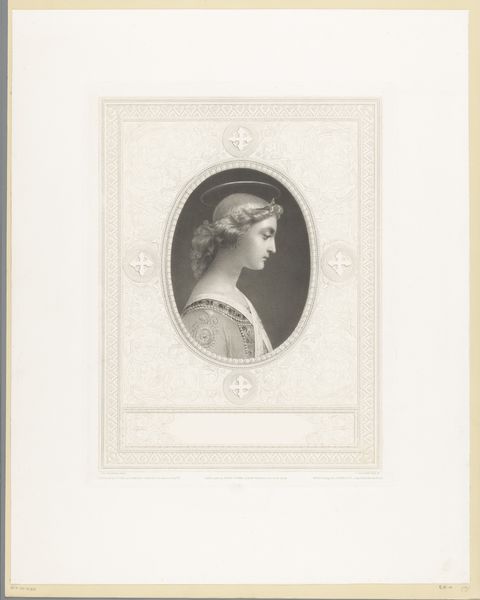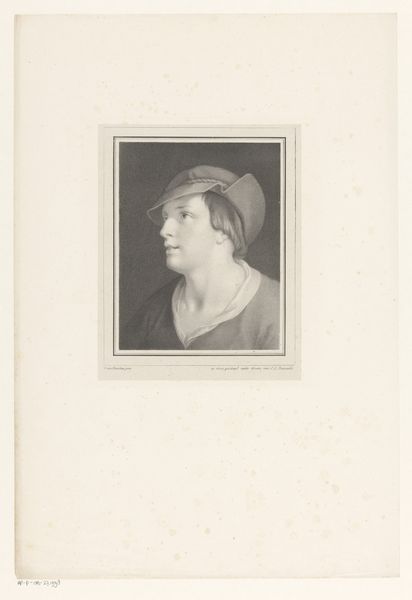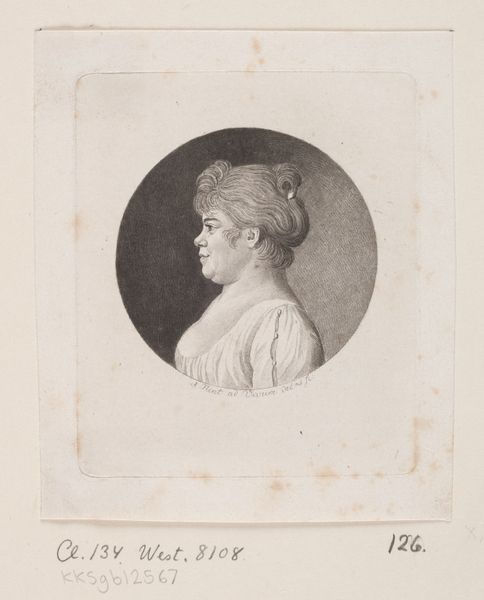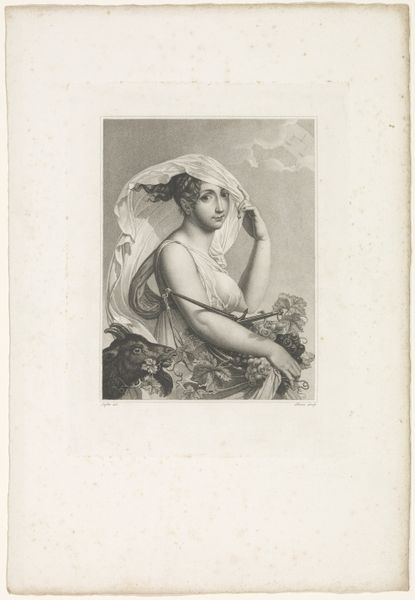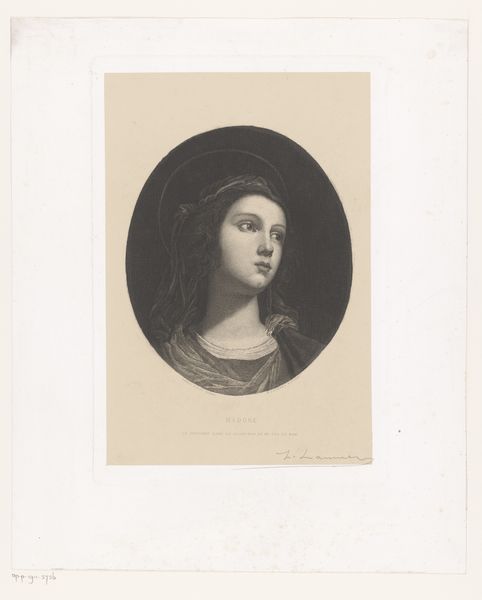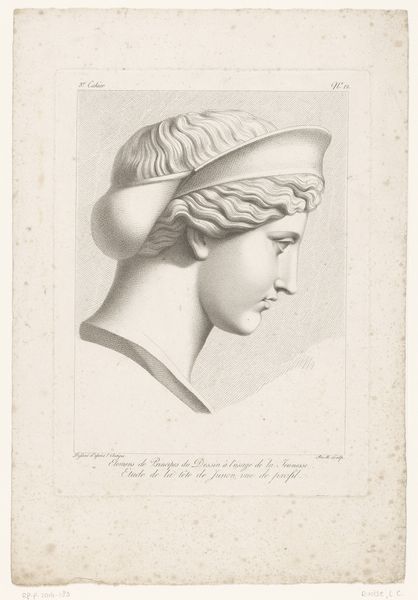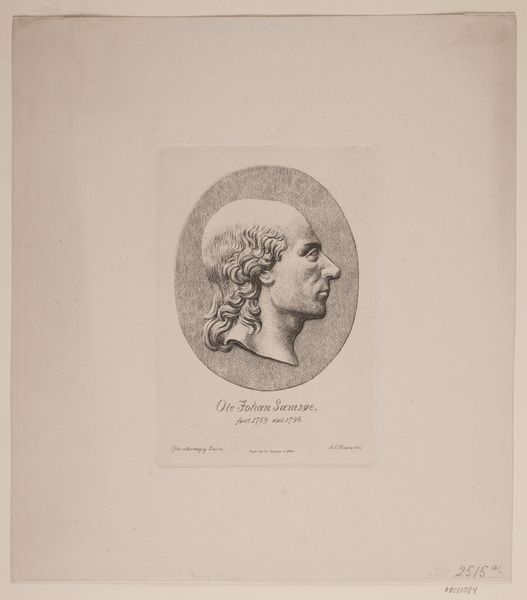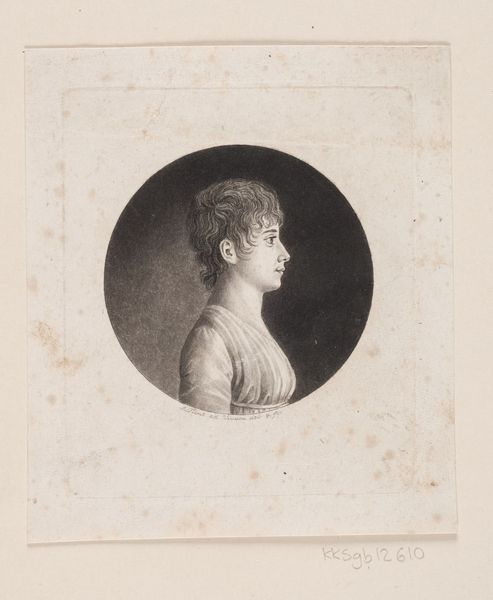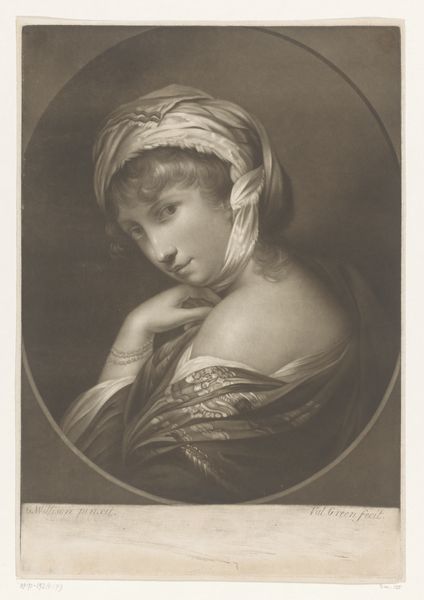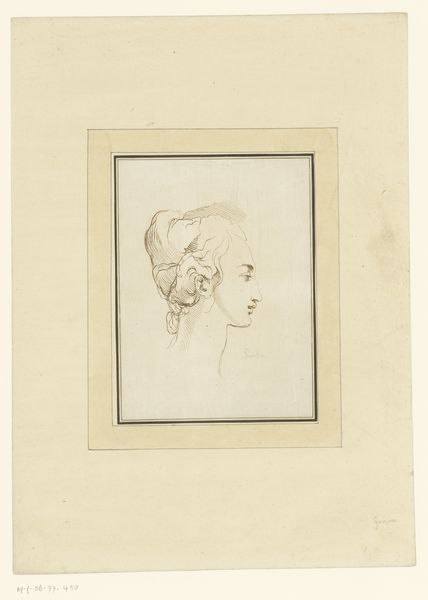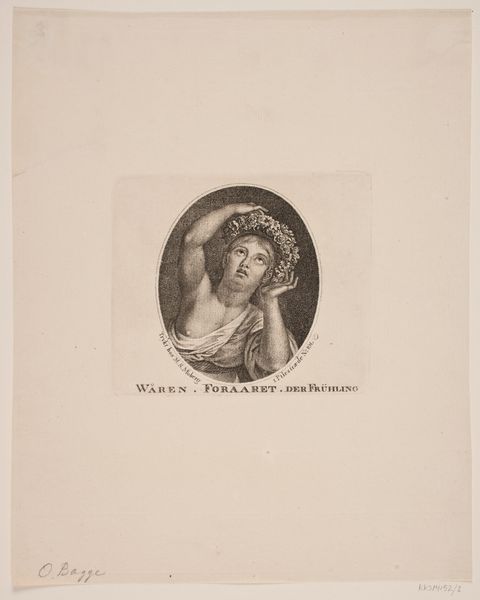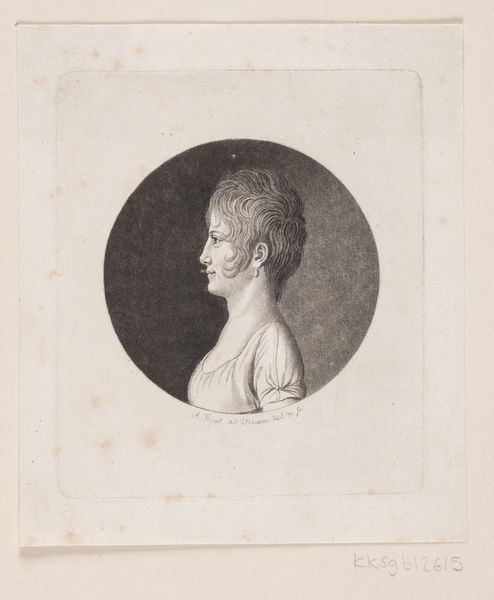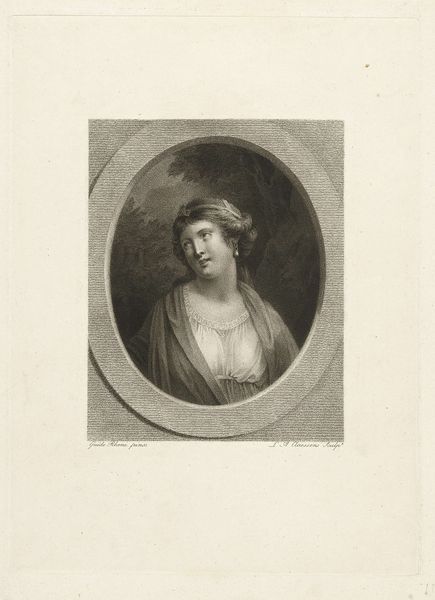
drawing, pencil
#
portrait
#
pencil drawn
#
drawing
#
neoclacissism
#
light pencil work
#
pencil sketch
#
figuration
#
pencil drawing
#
pencil
#
academic-art
Dimensions: height 305 mm, width 250 mm
Copyright: Rijks Museum: Open Domain
Curator: Jean Augustin Daiwaille's "Portret van een vrouw," likely created between 1809 and 1850, is an elegant drawing in pencil now residing here at the Rijksmuseum. What is your first take on it? Editor: The subdued grey tones immediately evoke a sense of serenity. The softness of the pencil work almost imbues the subject with an ethereal quality. It's delicate, like a memory. Curator: Absolutely. The drawing reflects a Neoclassical interest in idealized beauty, which was quite en vogue in that period. It's not just a likeness but a constructed representation conforming to period aesthetics. You see it in the smooth contours, the flowing lines… Editor: Yes, and I think the head covering draws a viewer in—it isn't just about modesty. The translucent fabric, meticulously rendered, whispers of ancient vestals or Muses. It speaks to a certain kind of virtuous womanhood of the period. Curator: Precisely! Representations of women during that time were carefully policed. A work like this offers a glimpse into the cultural expectations projected onto women of that era. We see this sort of imagery consistently reinforced across societal venues. Editor: And despite those constraints, there's a flicker of individual character in the gaze, a touch of vulnerability that humanizes her. The symbols are all there to align her with virtue, but the artist also lets something of her personality show through. I wonder what she thought of how she would be viewed in history? Curator: Good question. Consider where it might have been displayed at the time of its making: within a private salon or study, reinforcing particular notions of femininity within a privileged circle. And now we encounter her, centuries removed, viewing the artwork itself through our own contemporary sensibilities. It is always being shaped and re-shaped by how its public encounter shifts in each generation. Editor: A cultural echo, then. These faint pencil lines carry echoes across time, transforming with each observer and cultural shift. Curator: A subtle reminder of how artworks transcend their immediate context and keep echoing and changing.
Comments
No comments
Be the first to comment and join the conversation on the ultimate creative platform.
